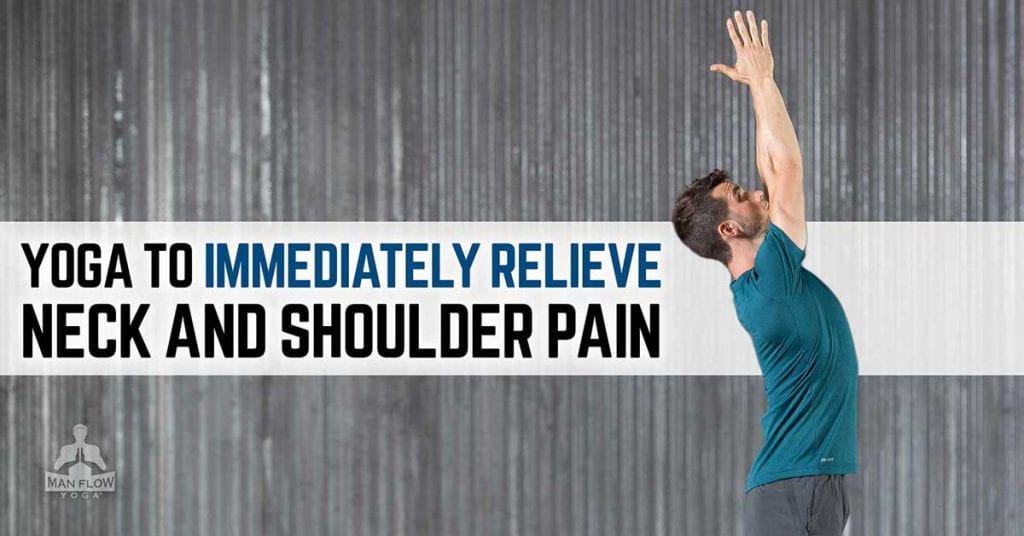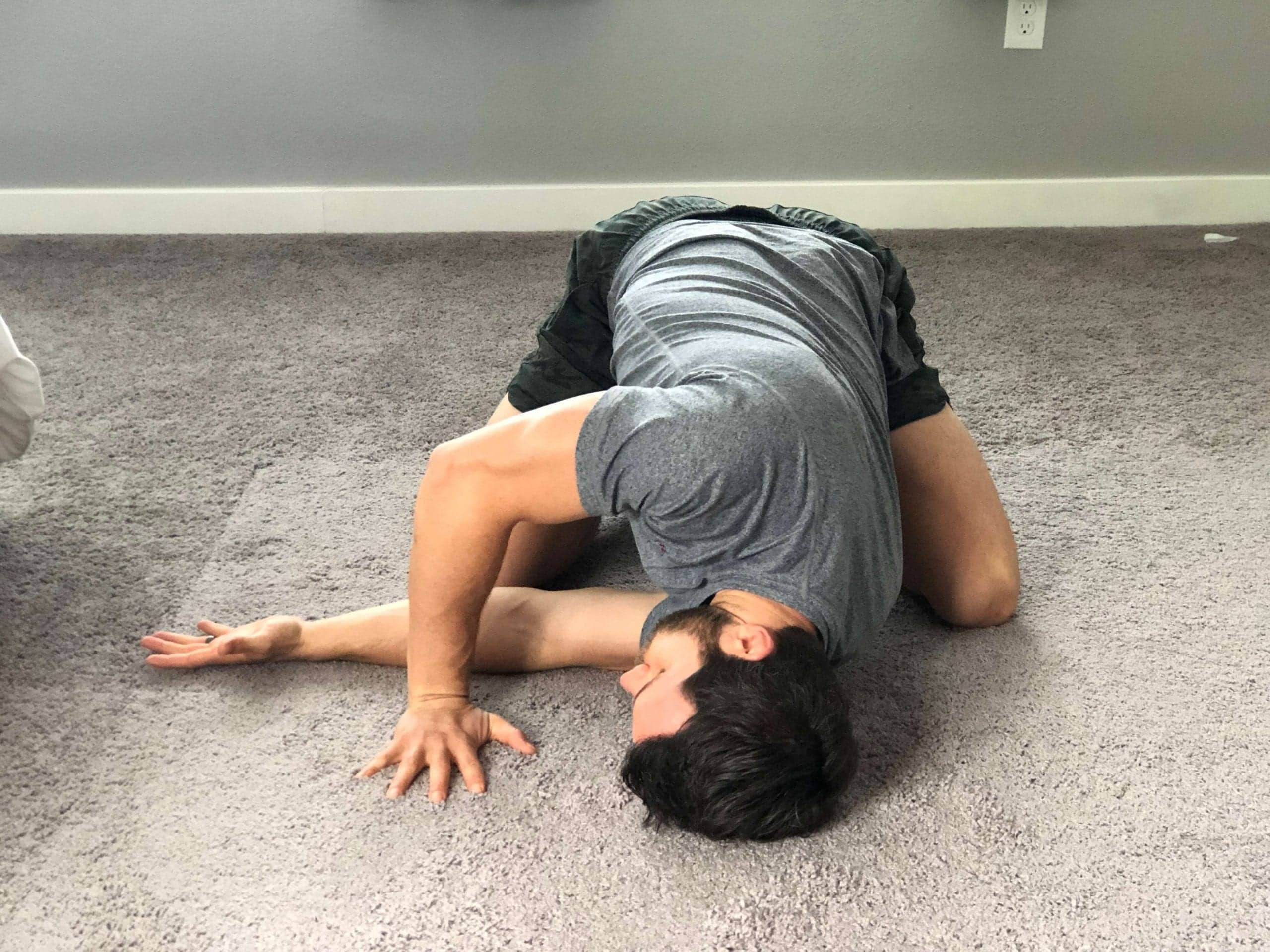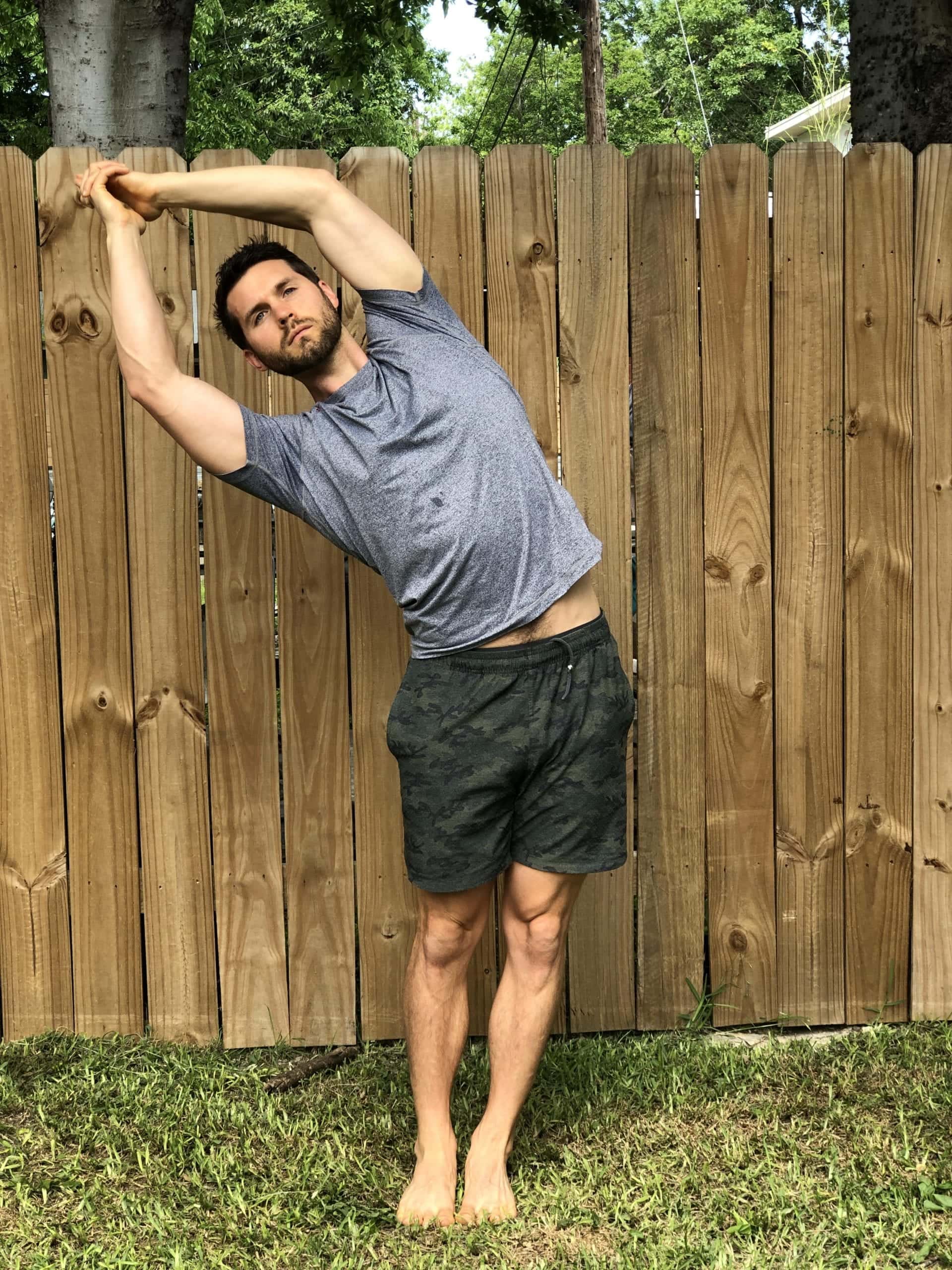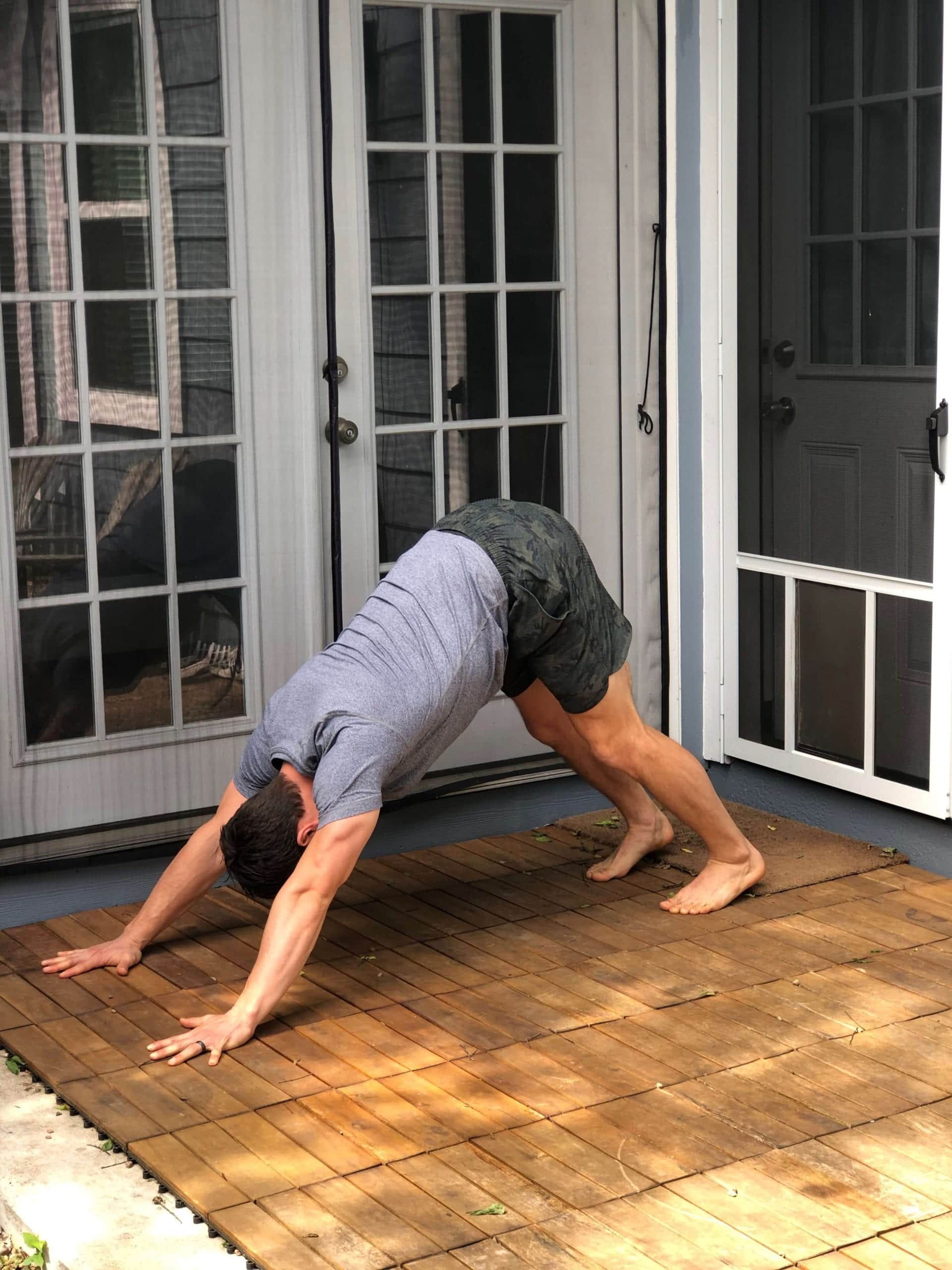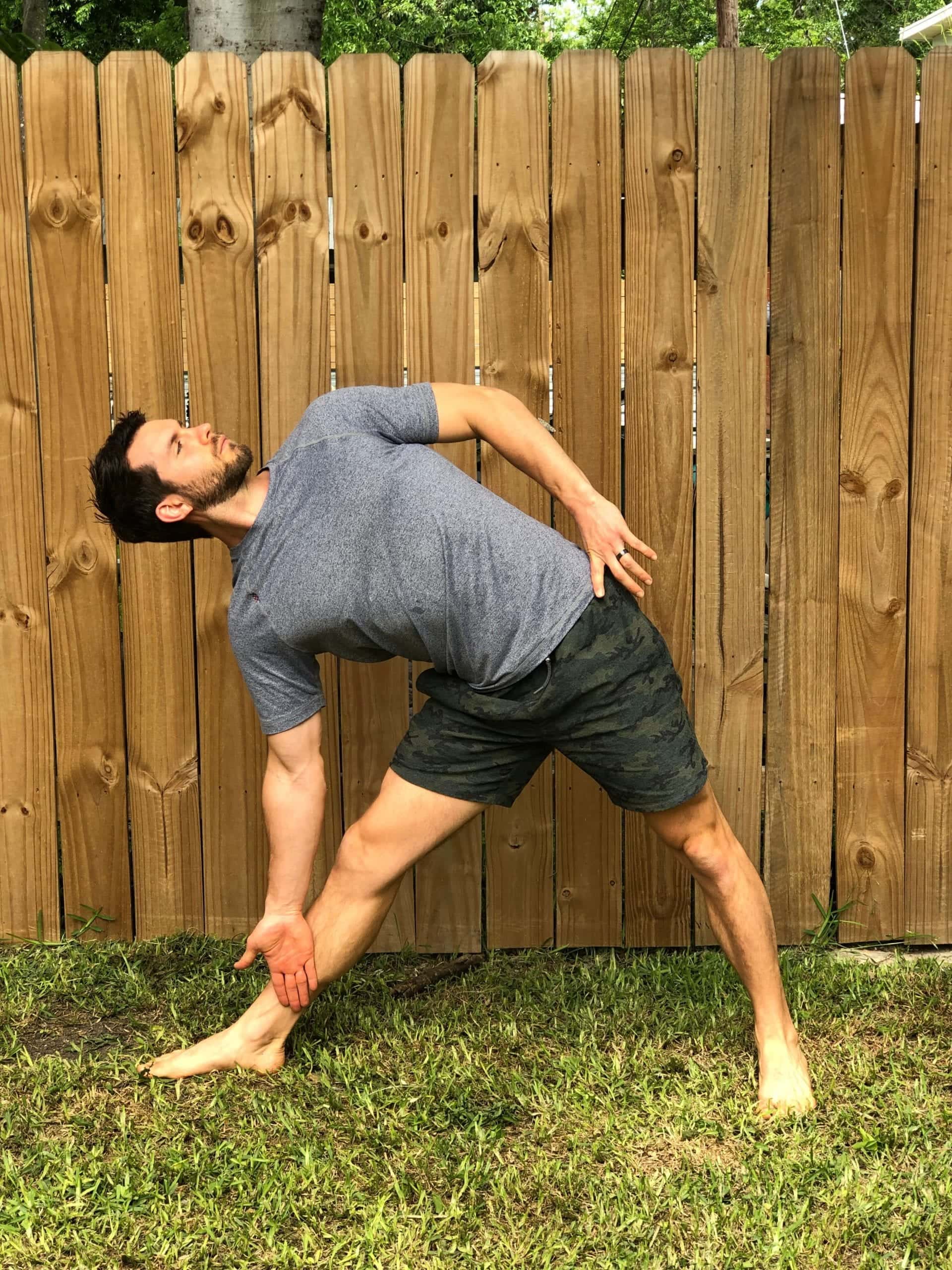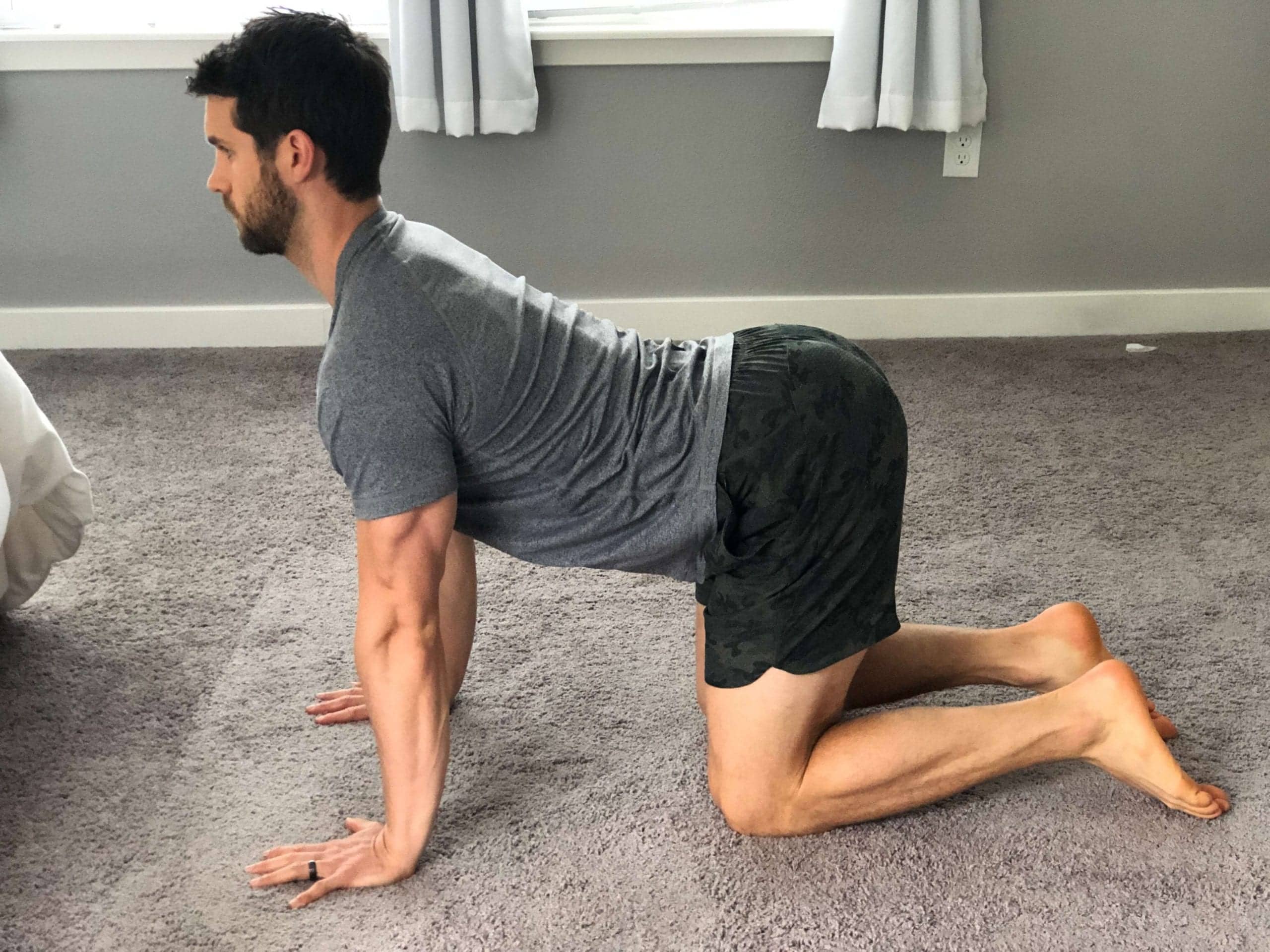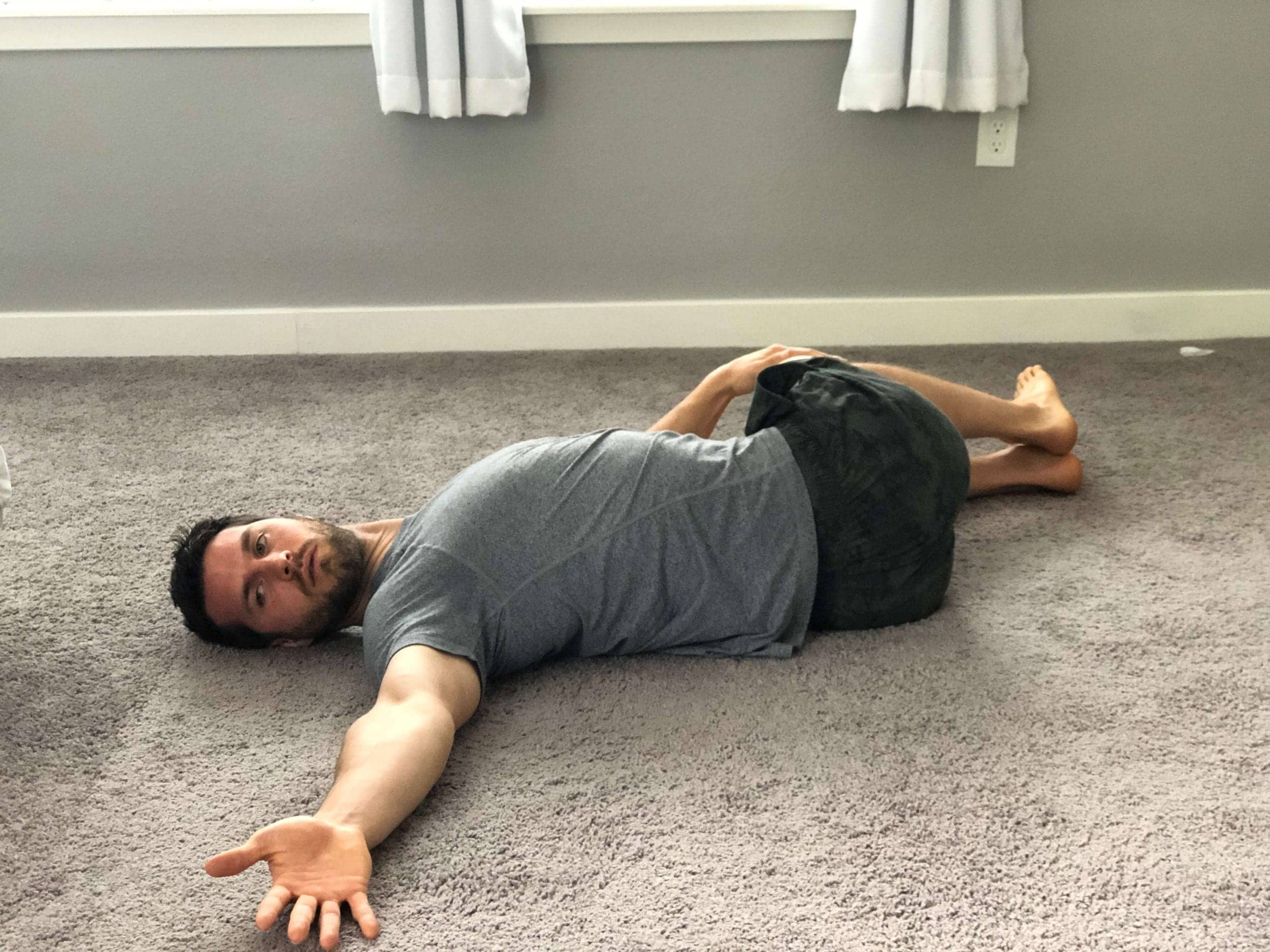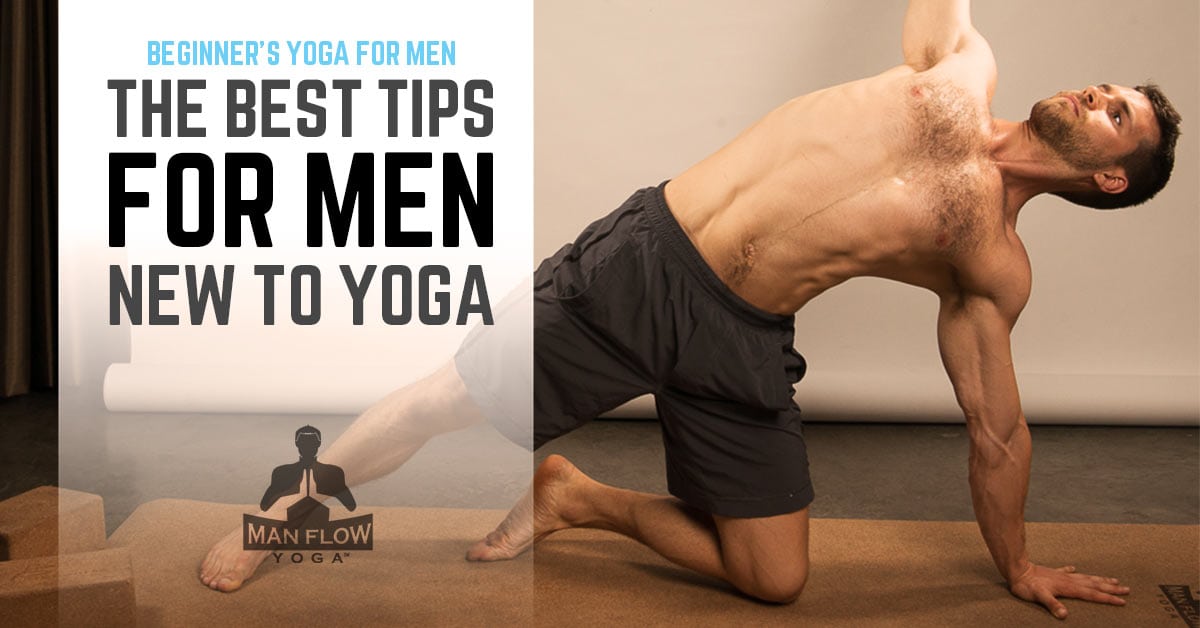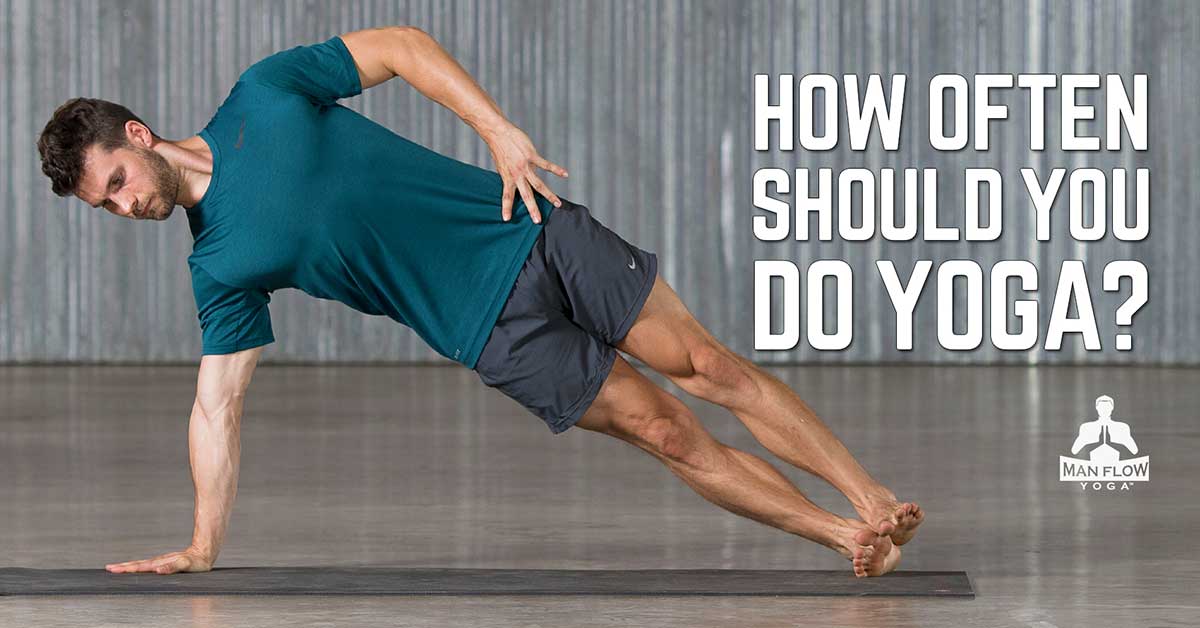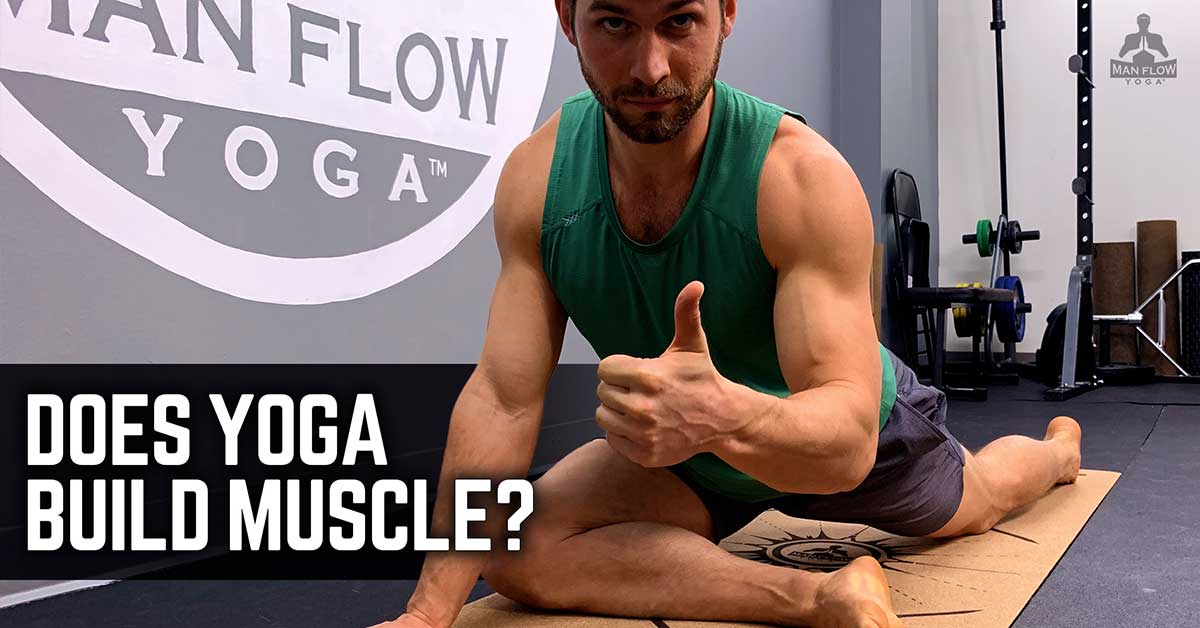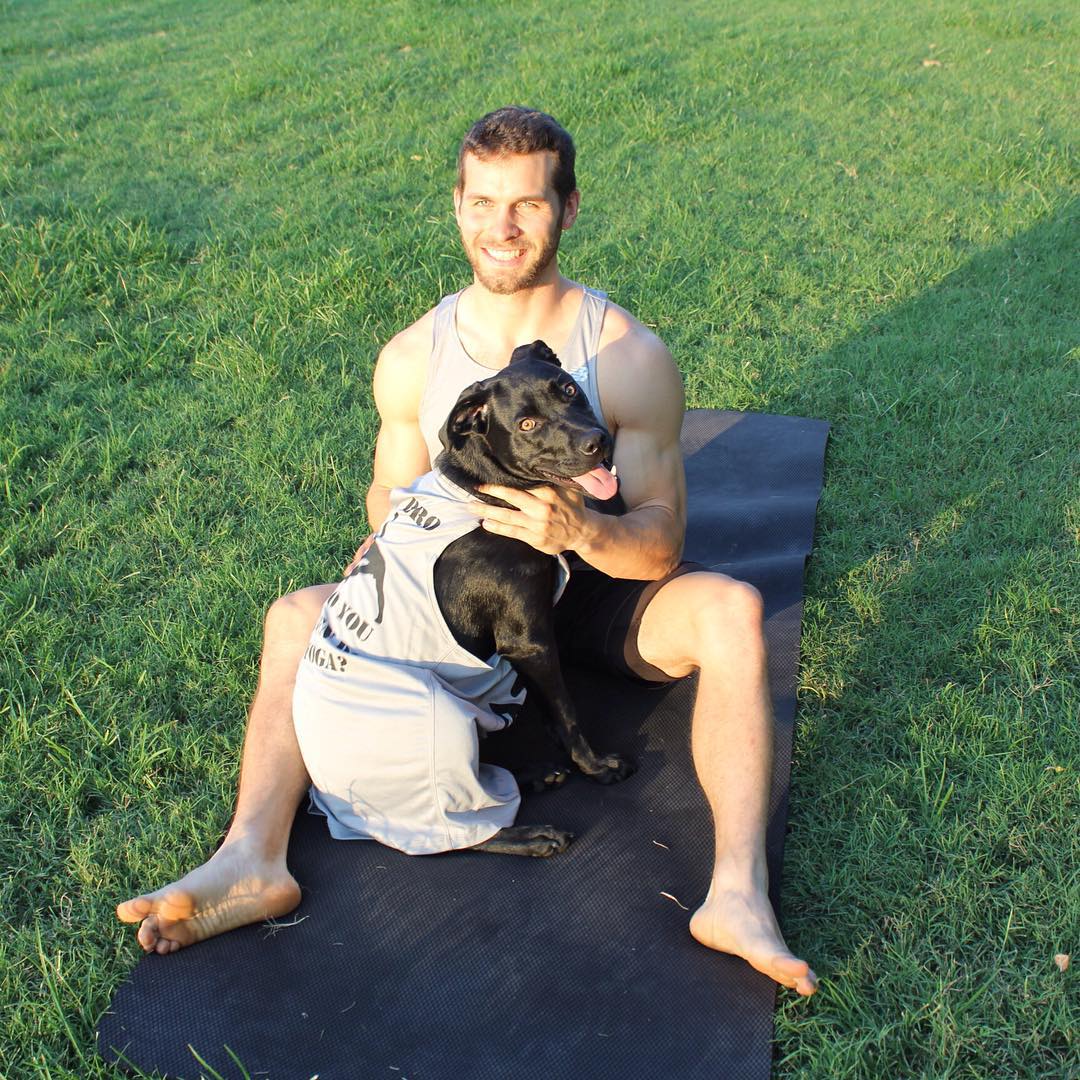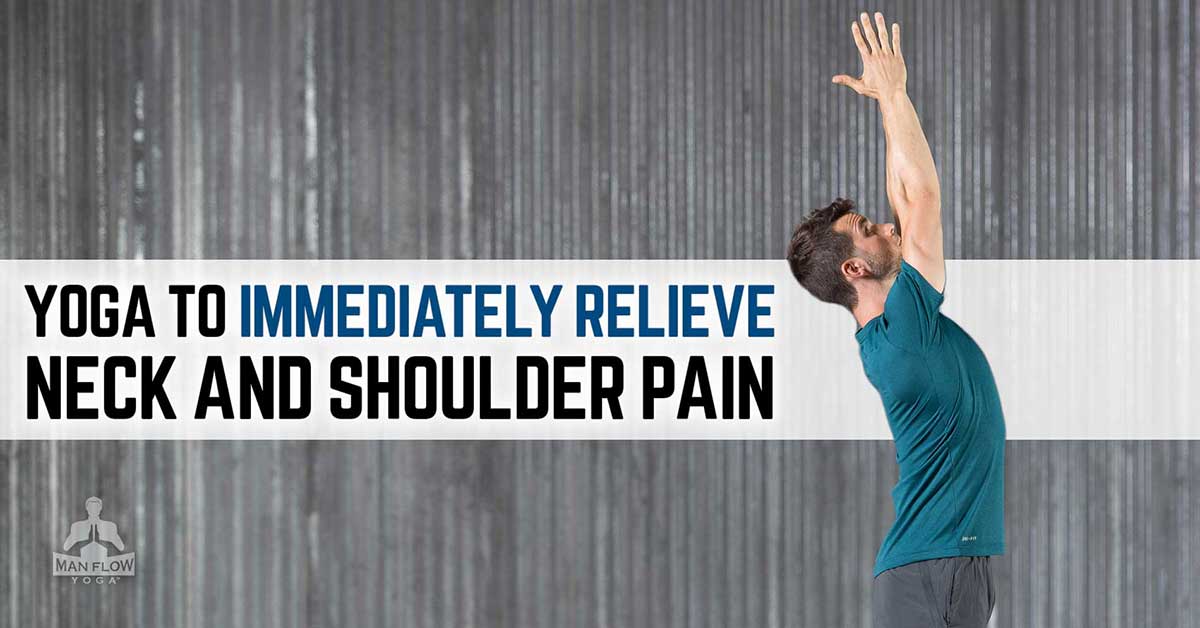Neck and shoulder stiffness are common problems that seem to sneak up on us and become nagging pains for longer than anyone wants, so I wanted to share some of my favorite yoga poses for alleviating it and why it’s caused to help prevent it from starting in the first place.
Here’s what we’ll cover:
- Causes of Tight Neck And Shoulders
- How To Stretch Correctly With Yoga
- 7 Yoga Poses For Tight Neck And Shoulders
- How To Prevent Neck And Shoulder Pain
- Additional Resources
Causes of Tight Neck And Shoulders
We carry most of our stress in our neck and shoulders, often finding ourselves with our shoulders rounded and our necks tense as well, but tightness of the neck and shoulders doesn’t just happen as a result of one thing – it’s a combination of things.
Stress
Stress has become a normal part of everyday life in our society either from work, friends, family, or just driving, but what does that mean for your neck and shoulders? Your body’s natural response to any stress is to go into the flight or fight response, which, in turn, causes your muscles to tense up to some degree. You may not notice it, but the accumulation of everyday stress causes your shoulders and especially your neck to start holding tension – ultimately leading to pain.
Prolonged Sitting
Society has advanced where most people spend the majority of their time sitting – at work, on your commute, and for relaxation. However, most of us don’t have perfect posture when sitting, and you might often find yourself hunched over your desk. This causes a chain reaction, where your lower back rounds, your shoulders hunch forward, and ultimately your head leans forward out of alignment. Surprisingly, the average human’s head weighs about 10 pounds, so having your head out of a neutral position puts a significant strain on your neck and shoulders – leading to pain and discomfort.
Poor Posture
Poor posture is more than just how you sit; your posture when standing or walking are both major factors in considering the causes of your neck and shoulder tenseness. As with sitting, having poor posture while upright has a chain reaction through your back to your neck that causes you to slowly but surely develop neck pain. In fact, a major contributing factor is how you look at your phone, and since most of us hold our phone at a level where your gaze is turned downward, our heads follow that to tilt – putting strain on your neck.
Bad Sleeping Position
I’m sure all of us have woken up with a painful twinge in your neck – making it nearly impossible to turn it in a particular direction, but this is the extreme example of how bad sleeping positions affect your neck and shoulders. A poor sleeping position can still affect you negatively in a less dramatic way.
What’s the best way to sleep? Honestly, the way that helps you get the best sleep you can. Your mattress, pillows, and sleeping position all come into play here. Experiment with different combinations to figure out what works best for you.
Note: You also might want to start doing preventative stretches BEFORE you go to bed to make sure your muscles are relaxed while sleeping.
Previous Injury
Past injuries are often linked to a decreased range of motion. If you’ve broken a bone or injured yourself in the past, that area might be weak compared to others causing you to discomfort – even if you don’t notice it. It’s important to restore the mobility in that area with gentle restorative stretching routines.
How To Stretch Correctly With Yoga
Yoga is great for relieving neck and shoulder, but if your goal is to get rid of that pain and discomfort as quickly as possible – and avoid making it worse – you should focus on (1) doing poses that specifically relieve tension in the neck and shoulders, and (2) do yoga in a way that relieves tension, instead of doing a strength-focused power yoga routine. We’ll address both in this section!
There are plenty of yoga routines to follow online or in a class, but if you are looking to specifically target your neck and shoulders, a random yoga routine might not focus on your problem areas as deeply as you like. This is why doing targeted stretches at your own pace can reap more benefits than following a random yoga routine.
When practicing yoga for the neck and shoulders, as with all exercise, it’s important to listen to your body. When practicing yoga to relieve tightness in your neck and shoulders, you need to pay extra attention to using your breath to relieve tension.
To do this, you want to breathe as deeply as possible. Fill up as much air as possible in your lungs (without arching your back), and exhale as completely as possible, squeezing your belly button toward your spine and contracting your abdominal wall as you do so. As you exhale, you’ll want to focus on deepening the stretch, or releasing tension in the muscle being stretched. The more you can focus on this, the more quickly and more significantly your tension will be released.
Signup for the FREE 7-Day Challenge
7 Yoga Poses For Neck And Shoulders Pain
These 7 beginner-friendly yoga poses are specially chosen because they allow you to target and release muscle tension in your back, shoulders, and neck. Ease into each stretch slowly and focus on your breathing, body position, and muscle activation to get the most out of each stretch!
Exercise 1: Thread The Needle
This restorative posture stretches the muscles of the rotator cuff, traps, and rhomboids – the shoulder muscles, neck muscles that can cause discomfort in your shoulders if there is excessive tightness.
Technique
- Start in Child’s pose with your knees wider than your shoulders, big toes touching, and hips shifted back toward your heels. Keep arms and torso long.
- Slide your left arm under your right arm between the right hand and right knee, palm facing up.
- Press the back of your arm into the floor, and lightly pull it back to the left to stretch the left shoulder.
- Hold the posture, inhaling as you expand your chest, and exhaling as you deepen the shoulder stretch.
- Repeat on the other side.
Modifications: If this stretch is difficult, try it standing, instead. Bring one arm straight across the body, wrap the opposite forearm around the triceps, and lightly pull your arm to the side to stretch the upper back and shoulder.
Exercise 2: Wide-Legged Forward Fold 2 – strap behind back
This pose with a strap behind your back is great at relieving back tension, opening the chest, and releasing shoulder tightness. It focuses on engaging the muscle in your upper-back to help relieve tension in the front of your torso. Perfect for people with shoulder discomfort as a result of sitting at a desk during the way with poor posture.
Technique:
- Stand with your feet 4 to 6ft (1.25–1.75m) apart, and slightly turn your toes inward. Engage the arches of your feet, and press into outer edges of feet.
- Engage your quadriceps and squeeze your inner thighs toward each other.
- Hinge at the hips and pull your chest forward and down, maintaining a flat back.
- Hold a strap behind your back or interlace your fingers for a challenge.
- Squeeze hip flexors and core toward each other, and fold forward as far as you can while keeping the back flat.
- Hold the posture, inhaling as you pull your chest forward and lengthen the body, and exhaling as you fold deeper.
Modifications: To make it easier bring your legs closer together or bend at your knees.
Exercise 3: Standing Side Bend
This side bend strengthens your shoulders and core while improving mobility in the shoulders and sides of your body. It’s great for increasing spinal mobility and relieving tension in your spine and shoulders.
Technique:
- Stand in Mountain pose with your big toes nearly touching and your heels about 1in (2.5cm) apart.
- Interlace your fingers overhead.
- Lock out your arms, and point your index fingers to the ceiling.
- Rotate your arms inward so your biceps face your ears.
- Press down into the heels and the balls of your feet.
- Make your body as tall as possible, then lean to the right with your upper body, hips lightly pressing in the opposite direction.
- Hold the posture, inhaling as you get taller, and exhaling as you bend deeper.
- Repeat on left side.
Modifications: Don’t bend as far to the side, hold a strap overhead, stand with your feet wider apart.
Exercise 4: Downward Facing Dog
This quintessential yoga posture stretches the shoulders and allows you to relax your neck. It properly aligns your spine and improves your shoulder mobility to help relieve tension from your low back to your neck.
Technique:
- Start in Plank with your shoulders over your hands, core engaged, feet hip-width apart, and toes tucked.
- Lift hips to form a straight line from shoulders to heels.
- Lift your hips back and up to form a pyramid shape with your body. Focus on creating a straight line from hands to hips.
- Squeeze your upper thighs and abdominal muscles toward each other.
- Rotate biceps slightly forward to open your shoulders and release tension in the neck.
- Squeeze your arms and shoulders toward each other to engage the upper body.
- Relax your neck to look back at your feet.
- Release heels toward the floor to stretch the calves.
- Hold the posture, inhaling as you lengthen and lift, and exhaling as you deepen the stretch and increase engagement.
Exercise 5: Supported Triangle
This pose helps to mobilize the spine, upper back, and neck with a slight twist. It’s great for people that sit for long periods of time and works to relieve tension throughout your spine.
Technique:
- Stand with your feet slightly wider than shoulder-width apart, toes turned slightly in. Turn your right foot outward, perpendicular to the left foot.
- Place hands on hips to ensure hips are level.
- Keeping your hips directly under the shoulders and your spine neutral, bend the right knee until it is directly over your ankle.
- Bend from the waist to move the torso over your bent leg.
- Reach your left arm toward the ceiling, palm facing forward, and extend your right arm to the floor.
- Tighten the left side of your body, lengthen your torso, and use your core to roll back the top shoulder and open up the chest.
- Turn your head to look up at the raised hand.
- Press through your right heel and slowly straighten the right leg until you feel a stretch in the inner thighs.
- Press your right hip into your left hip to offset the hips and deepen the inner-thigh stretch.
- Extend arms as much as possible to stretch the chest and arms.
- Hold the posture, inhaling as you lengthen the torso and pull your shoulders away from your hips, and exhaling as you deepen the stretch in your inner thighs and tighten your core.
- Repeat on the other side.
Modifications: If you are not quite flexible enough, rest your hand on a block placed inside your front foot. You can also slightly bend your knee as long as you feel the stretch. It may also help to bring your legs closer together.
Exercise 6: Cat-Cow
This slow movement from an arched to rounded spine is one of the best exercises you can do for your back and neck. Use this exercise to mobilize your spine and release kinks or stiffness in your neck and back.
Technique:
- Start on all fours with shoulders over wrists and hips over knees. (Toes can be tucked or untucked.)
- Position knees and ankles parallel to each other, hip-width apart.
- Form an L-shape with your index fingers and thumbs.
Cow:
- Inhale as you arch your spine, pulling your chest forward and lifting your tailbone toward the ceiling.
- Lengthen the front side of your torso, and maintain length in your mid- and upper spine.
Cat:
- Exhale as you round your spine, pulling your forehead toward your hips.
- Press down through your hands to lift the upper back toward the ceiling.
- Tuck your chin to your chest.
- This is one rep. Continue to alternate slowly from Cat to Cow, inhaling as you move into the full extension of Cow, and exhaling as you move into the full flexion of Cat.
- Lengthen each breath as much as possible.
Exercise 7: Reclined Twist
Twisting is an essential movement for maintaining a strong and mobile spine. It helps to realign your spine from your lower back to your neck, and ultimately helps to relieve tension between your shoulders and neck.
Technique:
- Lie on your back.
- Lift your knees directly over your hips. Bend your knees and relax your legs.
- Extend arms directly out to the sides with palms facing the ceiling.
- Lower your legs to the left, keeping the legs stacked.
- Place left hand on the right knee. Use your core to twist, and pull your ribcage toward your core to deepen the stretch in your back.
- Press the crown of your head away from your shoulders, and turn to face the right.
- Hold the posture, inhaling as you maintain your position, and exhaling as you squeeze your core and deepen the twist.
- Repeat on the other side.
How To Prevent Neck And Shoulder Pain
A regular and consistent yoga practice is important for not only helping you relieve your neck and shoulder pain but also preventing it, since regular practice helps to develop muscle and strength to take pressure off your joints and maintain posture. However, there are other preventative measures off the yoga mat that you should be mindful of to help you stay pain-free.
First off, it’s important to improve your posture. And how do you do that? First is to be aware of it – both sitting and standing. Your posture is one of the biggest deciding factors in where your body holds stress.
Being hunched puts an unnecessary strain on your lower back and neck, so focus on keeping your back straight and chest out to prevent rounding the spine. This works to limit the amount of stress on your spine, thus reducing and preventing your pain from starting.
Secondly, if you find yourself sitting for long periods of time, simply getting up and going for a short walk can significantly help with your posture and pain as well. Even a short stretching routine at your desk can greatly help with your tense muscles. However, after long periods of sitting you should not do forward fold movements, instead do backbends to counteract the sitting posture.
When looking at your phone, you should bring it closer to your natural line of sight. This helps to keep your neck in a neutral position, so that you won’t strain it by looking down.
Lastly – but certainly not least important – you’ll want to do the mobility and strengthening work found in a good yoga routine. Doing the right postures [for your body] just a few minutes per day can tremendously improve the overall feeling in your shoulders and neck.
These may all seem like simple fixes, but they can greatly improve your posture and muscle engagement to help prevent neck, back, and shoulder tightness from developing. I hope these yoga poses and points have been beneficial in relieving your tension and pain. Let me know in the comments!
Additional Resources
You might be interested in some tips on starting off your yoga practice, so read on! 3 blogs covering some basics.
About the author, Dean Pohlman, Founder & CEO of Man Flow Yoga, Author of Yoga Fitness for Men, Expert on Yoga Fitness for Men.
Looking for non-spiritual, yoga for men workouts?
Learn More About Man Flow Yoga and how it can help you with your fitness goals:
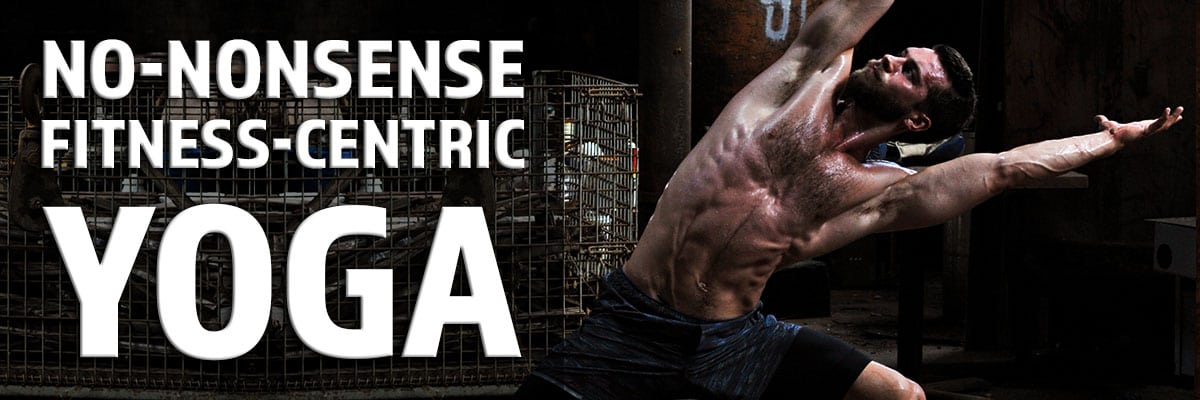 Join Today for Instant Access!
Join Today for Instant Access!
